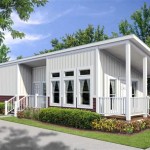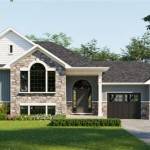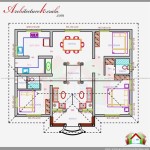Odd Home Floor Plans: A Detailed Guide
When it comes to home design, there are endless possibilities. While some people opt for traditional layouts, others embrace the unconventional with odd home floor plans. These unique designs can add character and charm to a property, but they can also come with challenges. If you're considering an odd home floor plan, it's important to weigh the pros and cons carefully to ensure it meets your needs.
Benefits of Odd Home Floor Plans
1. Architectural Interest: Odd home floor plans break away from the norm, creating visually striking and memorable spaces. They can incorporate unusual angles, curves, and levels, adding architectural interest and character to a home.
2. Space Optimization: Odd floor plans can maximize space in unconventional ways. Non-traditional layouts allow for innovative solutions, such as utilizing odd-shaped spaces or creating multi-functional rooms.
3. Natural Light: Unique floor plans can optimize natural light. By incorporating larger windows or skylights in strategic areas, odd layouts can create bright and airy living spaces.
Challenges of Odd Home Floor Plans
1. Furniture Placement: Odd home floor plans can present challenges in furniture placement. Non-standard room shapes and angles may require custom-sized furniture or creative arrangements to accommodate the space.
2. Flow and Functionality: While odd floor plans can offer visual appeal, they may not always be practical. It's important to consider the flow of traffic and ensure that the layout works well for everyday living.
3. Resale Value: Odd home floor plans may appeal to a niche market and may not have the same resale value as more traditional layouts. Potential buyers may be hesitant to purchase a home with an unconventional floor plan.
Types of Odd Home Floor Plans
1. Pie-Shaped Floor Plan: This design resembles a slice of pie, with the living area typically located in the wider section and bedrooms in the narrower part.
2. L-Shaped Floor Plan: This layout forms an "L" shape, with rooms arranged around two perpendicular walls. It can create separate living and sleeping areas.
3. Split-Level Floor Plan: This design involves different levels within the home, connected by stairs. It can create interesting spaces with varying ceiling heights.
4. Round or Curved Floor Plan: Homes with round or curved walls offer a unique and distinctive design. They can create flowing spaces and offer panoramic views.
Considerations Before Choosing an Odd Home Floor Plan
1. Lifestyle: Consider your lifestyle and daily routines to ensure the layout meets your functional needs.
2. Budget: Odd floor plans may require custom-sized windows, doors, and furniture, which can increase the construction costs.
3. Resale Value: Think about the potential resale value of your home. Odd floor plans may appeal to a limited buyer pool.
4. Architect and Contractor: Consult with an experienced architect and contractor who specializes in odd home floor plans to ensure the design is feasible and meets building codes.
Conclusion
Odd home floor plans can add character and architectural interest to a property, but it's important to carefully consider the challenges and implications before making a decision. By understanding the benefits and limitations, as well as the different types of odd layouts, homeowners can create a unique and functional home that meets their needs and aesthetic preferences.

Cool Floor Plan For The Odd Shaped Lot Love Poolhouse House Plans

Global Property The Family Home With A Floor Plan That S Missing Hallway

10 Houses With Weird Wonderful And Unusual Floor Plans

10 Houses With Weird Wonderful And Unusual Floor Plans

Unique House Plans Stock Narrow Odd Lot Floor

Unique One Story House Plans Monster

Unique One Story House Plans Monster

European Style House Plans For A Unique 1 Story Luxury Home

U Shaped House Plans With Central Courtyard Google Search Unique Floor Pool

4 Tips To Make Your House S Irregular Floor Plan Work For You National Trust Historic Preservation








